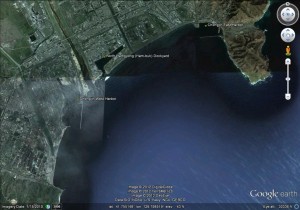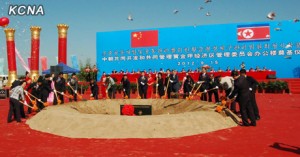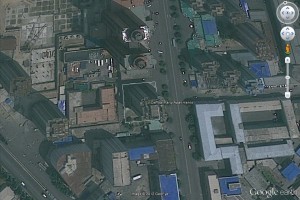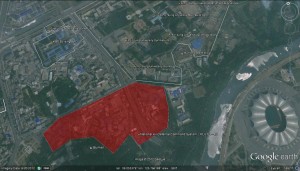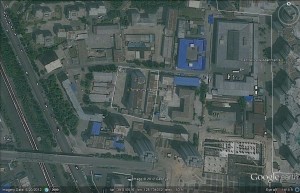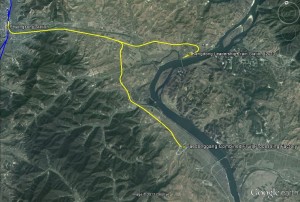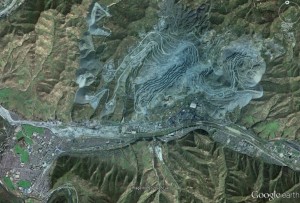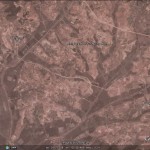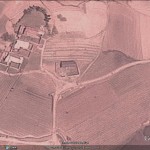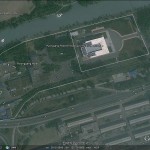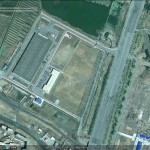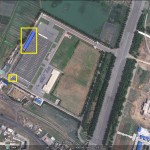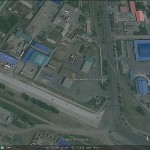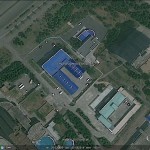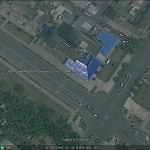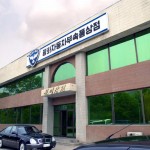Following (or perhaps concurrently with) the story on the Russia – DPRK debt forgiveness deal, Andrei Lankov writes about DPRK trade and investment in the Asia Times:
But a brief look at trade statistics makes one suspicious about claims in regard to Russia’s prominence in North Korean issues. It is not widely understood that summits and official rhetoric notwithstanding, actual trade between North Korea and Russia is miniscule, even by the meager standards of North Korea.
In 2011, trade volume between the two countries was merely US$0.12 billion. As inter-state trade goes, this practically means that Russia and North Korea have close to no trade. In the same year, Sino-Korean trade hit the $5.6 billion mark. If you compare this with other East Asian countries this is still peanuts, but it is nonetheless almost fifty times the level of Russo-North Korean trade.
One also might notice that the improvement in political relations between Russia and North Korea had absolutely no impact on Russo-North Korean bilateral trade volumes. If anything, the trade declined when the politicians were smiling and exchanging niceties.
Over the past 15 years, Russo-North Korean trade on an annual basis has fluctuated around the $100-$250 million mark (in a clear downward trend). Throughout the same period, Sino-North Korean trade has increased almost 10-fold.
It is strange that these obvious facts do not attract enough attention among those who like to talk about Russia’s supposed leverage in Pyongyang. These figures are easily obtainable and yet almost entirely overlooked. This seems to be because the figures do not easily fit into preconceived notions about Russo-North Korean relations; the inconvenient truth is that the political rhetoric shared between the two countries is often very shallow and lacking in an economic basis.
To be blunt, Russian businesses have no interest in North Korea.
North Korea is a very poor place that has few comparative advantages in the world market. Nonetheless such advantages do exist. First, North Korea has some mineral resources (iron ore,coal, copper, lead and so forth) which are largely to be found in the northern most part of the country. Second, it has a rather skilled and unbelievably cheap workforce. North Korean workers consider themselves lucky if they are paid $25 a month. But none of these two advantages are of any significance to corporate Russia.
Russian mining companies have all of Siberia at their disposal, and North Korea’s mineral deposits do not look all that impressive by comparison. Things are made even worse by the constant threat of political instability and the gross underdevelopment of transportation and infrastructure in general. Therefore, no major Russian mining firm is willing to invest in North Korea (some have been courted by Pyongyang, have always responded in the negative).
The pull of cheap labor is also not all that attractive to Russian companies. The Russian developmental model does not involve heavy reliance on light industry in general, nor in particular the manufacture of T-shirts and running shoes. There is a moderate need for cheap North Korean labor in Russia itself, and so for many decades North Korean workers have been employed in Russia. But the scale of these operations is quite limited, and likely to remain so (10-20,000 workers at most).
One can of course point at two much discussed projects of economic cooperation between Russia and North Korea – the proposed trans-Korean railway and proposed natural gas pipeline. The pipeline project was discussed during Kim Jong-il’s last trip to Russia in 2011, and as a result still attracts much attention. However, we should remember that the very similar trans-Korean railway was first officially approved in the late 1990s, but still remains on the drawing board and as elusive as ever. There is good reason to believe that a similar fate awaits the pipeline project: for years there will be talks, enthusiastic newspaper articles, even official visits, but not much in terms of actual construction.
Both railway and pipeline projects share one common feature: North Korea is treated as a space to traverse. Had this area been covered with tropical rainforest, or desert, it would have little impact on either of these projects, whose main task is to facilitate interactions between Russia and South Korea.
From a purely commercial view, a short-cut through North Korea makes perfect sense, but there are many political problems which ensure that we will have to wait for many years before any of these projects will begin in earnest.
The major problem is recurrent and perhaps incurable instability which blights the Korean peninsula. Once Russian companies start real construction, they will become hostages of the complex and often unpredictable clashes of power interests in and around the Korean peninsula.
Additional Information
1. Read more about the Rason railway project here.
2. Read more about the pipeline project here.
3. more economic statistics can be found on my DPRK Economic Statistics page
Read the full story here:
North Korea lacks rich relation in Russia
Andrei Lankov
Asia Times
2012-9-18

